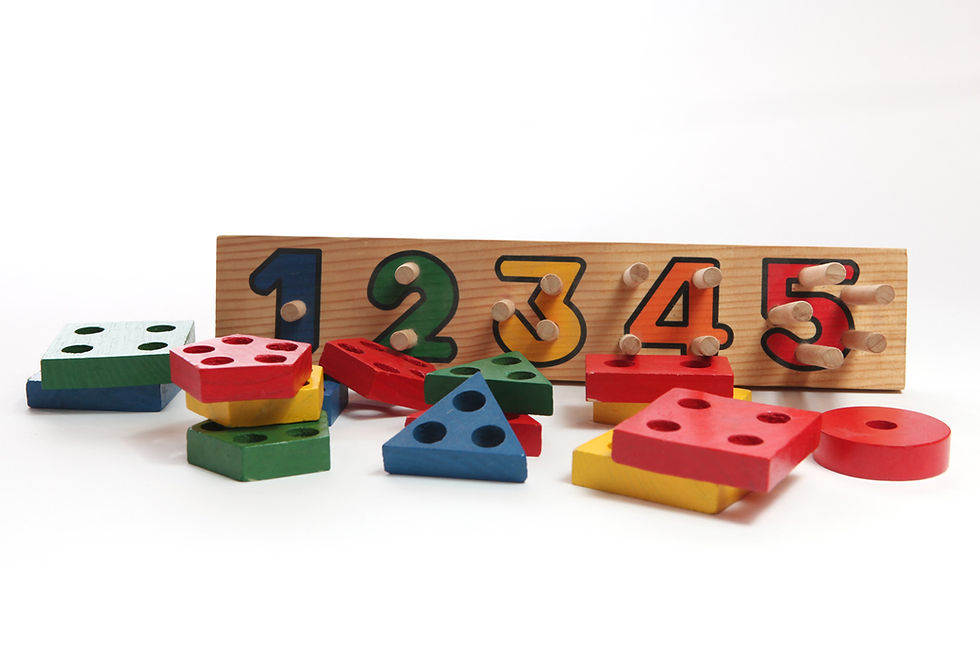Enrichment Isn’t an Optional “Add-on” - It’s a Vital Training Strategy: Why every reactive or fearful dog needs a life full of species-appropriate activities
- Ruth Hegarty

- Jun 18
- 4 min read

If you’ve been told to “just tire your dog out more” or “give them a puzzle toy,” you’re not alone—and you might have wondered if that advice really makes a difference to your dog's reactive behavior.
Here’s the truth: enrichment activities aren't just nice-to-have or a way to burn energy. They're a crucial part of helping your dog feel calm, safe and confident in the world.
Enrichment Activities are an important part of your reactive dog’s life and an integral part of my signature CHARM Approach to training reactive dogs. The first letter “C” stand for confidence and “H” for leash handling skills.
“A” is for the enriching Activities your dog engages in each day. As fun as these activities are for your dog, they are also important developmental and learning tools that can be tailored to address your dog’s anxiety, breed specific behavior needs and personal interests.

Why Enrichment Matters
Enrichment means giving your dog opportunities to engage in natural behaviors like sniffing, chewing, problem-solving, foraging, shredding, chasing and socializing. These activities allow dogs to express who they are individually, as a breed/mix and as a species. When thoughtfully offered, enrichment activities improve emotional well-being and decrease stress and frustration-based behaviors like barking, lunging and destructive chewing.
Think of it as filling your dog’s emotional cup so they don’t spill their negative emotions all over your walk when they see another dog, hear a garbage truck, or spot a skateboarder. For reactive dogs, enrichment activities help build confidence, reduce stress and enable your dog to focus during walks.

Why Bored Dogs Are More Reactive
Reactive behaviors are often rooted in stress, anxiety, or frustration. A dog who doesn’t get to use their brain or body in fulfilling ways builds up energy that has to go somewhere. Remember the Law of Conservation of Energy? Well, it states that energy cannot be created or destroyed. Instead of disappearing, energy is transformed into something else. For example, a dog with pent up energy due to a lack of appropriate outlets for their stress or natural behaviors is likely to direct that energy into excessive barking and/or reactive behavior on walks and elsewhere.
Enrichment activities for dogs are similar to how people have puzzles, art projects, and other hobbies as creative and intellectual outlets. We all benefit from activities that challenge our minds and engage our senses.

Without appropriate outlets for pent up energy, whether caused by stress or boredom, your dog may resort to behaviors such as:
Excessive barking at the window
Restlessness and pacing
Lunging on leash
Obsessive or destructive behaviors
Overreactions to normal everyday things
The good news? Thoughtful enrichment activities can prevent or significantly reduce these unwanted behaviors.
Here are Simple, Real-Life Enrichment Activities for Your Dog
Reactive dogs who struggle at home or on walks gain extra benefits from indoor enrichment activities. Having fun at home where they feel safe is a great way to reduce stress and anxiety.
Try these practical ideas that work beautifully for reactive or anxious dogs:
Indoor Sniffari: Toss treats into a snuffle mat or hide them around a room for your dog to seek out. This taps into their natural foraging instincts and activates the calming part of the brain.
Shredding Box/Busy Box: Fill a cardboard box with safe paper materials and some hidden treats, then let your dog dig and destroy to their heart’s content. Whatever you call it, this is a super easy way to entertain and enrich your dog.

Lick Mats: Coat a lick mat with one of your dogs favorite spreadable treats (nut butters, yogurt, pumpkin, etc.) and let your dog settle in for a relaxing lick session. Freezing the mat ahead of time will make it last longer and is a great summer cooling treat.

Ball Pit: Fill a bin or kiddie pool with plastic balls, wadded up paper or your dog's toys. Drop in some treats for a fun search game.

Chewing Variety: Rotate safe chew items like Benebones, no-hide chews, or stuffed Kongs to keep things interesting. Rotating all of your dog’s toys is a great way to keep things fresh and interesting.
Interactive Toys: Use food-dispensing puzzles or snuffle balls to encourage problem-solving and independence. If it doesn't scare your dog, there are battery operated interactive toys your dog can chase.
Scent Games: Teach simple scent games using socks or cotton balls with dog safe essential oils or different smells from your spice cabinet. (Make sure you check that anything you use is dog safe.)
Window-Free Time: For highly alert dogs, sometimes the best enrichment is a break from over-stimulating environments. Use frosted window film or turn on calming music so your dog can chill out with their thoughts for a bit.*
*NOTE: Looking out the window is a great enrichment activity for your dog if they don’t get so overstimulated that they spend the whole time barking.

Final Thoughts
If your dog is reactive, anxious, or bores easily, adding more physical exercise might not be the answer. Adding the right kind of mental and sensory enrichment probably is.
Enrichment activities help lower your dog’s baseline stress, increase confidence, and make all your other training efforts more effective. It’s not an extra; it’s a key part of your overall training plan.
If you need ideas for having calm, confident walks with your reactive dog? You'll find them in my free class, Peaceful Walks Start Here!







Comments